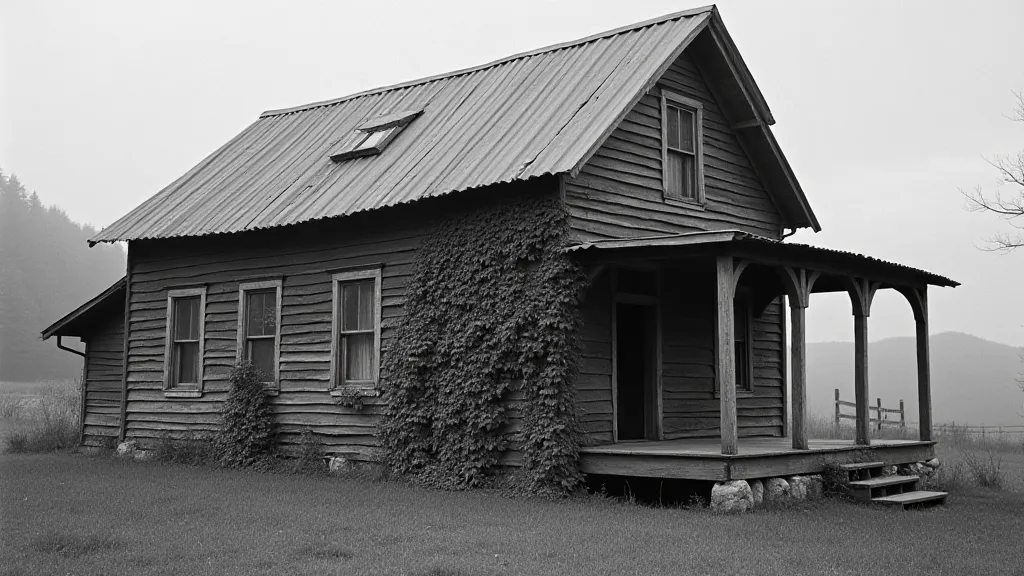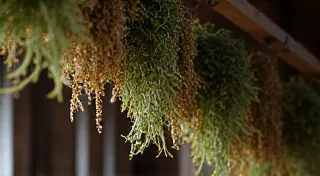The Echo of 'Haint': Ghosts in Appalachian Grammar
There's a certain melancholy that settles in when you realize something beautiful is fading. Not like a sunset, which returns, but something fundamental, woven into the fabric of a culture. For those familiar with the dialects of Appalachia, that melancholy often comes with the growing silence around words like "haint." It's a word freighted with history, folklore, and a profound connection to the landscape – and its resonance is diminishing with each passing generation.
Growing up in the hollers of Eastern Kentucky, "haint" wasn't just a word; it was a palpable presence. My grandmother, a woman whose eyes held the wisdom of generations, would point a weathered finger towards a shadowed corner and whisper, "Watch out for the haints, child. They like to mess with folks." Initially, I just thought she was being superstitious. It wasn't until I started listening, *really* listening, to the rhythms of the dialect – the unique grammar and vocabulary – that I began to understand the deep cultural significance embedded within that single, unassuming word.
What Exactly *Is* a Haint?
At its most basic, a “haint” (pronounced HAYNT) is the Appalachian English term for a ghost, spirit, or phantom. It's derived from the West African word "njainti," brought over by enslaved Africans who comprised a significant portion of Appalachia’s early population. The retention of this word, and the complex beliefs surrounding it, offers a fascinating glimpse into the cultural blending that defines the region. It wasn’t simply “ghost”; it was something more specific—a restless spirit often associated with misfortune or mischief. It carried a weight, an unsettling feeling that went beyond simple fear.
While many regions have words for ghosts, the nuances of “haint” are particularly interesting. It's often linked to bad luck, illness, and even curses. Certain actions, like pointing, were strictly forbidden lest you draw the attention of a haint. Houses were often protected with clever deterrents, often incorporating specific architectural elements designed to confuse or repel spirits. These practices highlight the deep-seated belief in the power of the unseen world and the necessity to live in harmony with it.

The Linguistic Journey: From West Africa to the Mountains
The story of “haint” is inextricably linked to the history of slavery and the cultural resilience of African Americans in Appalachia. While the exact route of the word’s transmission remains somewhat unclear, linguistic historians believe it traveled via the Gullah language of the Sea Islands off the coast of South Carolina and Georgia. Enslaved people, brought from various parts of West Africa, retained aspects of their ancestral languages and beliefs, which were then transmitted inland as they were forcibly relocated and integrated into Appalachian communities.
What’s remarkable is not just the survival of the word itself but the ways in which it was adapted and integrated into Appalachian English. It wasn’t simply a direct translation; it became intertwined with existing folk beliefs about spirits and the natural world. The word’s meaning evolved to reflect the specific anxieties and experiences of Appalachian communities, particularly those who had endured hardship and displacement.
Beyond the Word: Cultural Significance and Folklore
The presence of “haint” speaks volumes about the Appalachian worldview. It reflects a deep connection to the land, a respect for the unseen world, and a recognition of the enduring power of ancestral beliefs. It's a word that carries the weight of history, a testament to the cultural fusion that defines the region.
Beyond the simple definition, “haint” is woven into countless folktales and superstitions. Specific colors were thought to repel them – blue being the most effective – which is why you’ll often see blue "witching lines" painted on porches and around windows. These lines weren’t just aesthetic; they were protective measures against malevolent spirits.
I remember my grandmother telling me stories about “haint scares,” elaborate displays meant to frighten away lingering spirits. These often involved loud noises, flashing lights, and even the placement of strategically positioned objects. It was a communal effort, a demonstration of the power of shared belief and cultural identity. The act of protecting one’s home and family from the perceived threat of haints was a ritual, a way of reinforcing community bonds and preserving cultural traditions.

The Fading Echo and the Importance of Preservation
Unfortunately, the use of "haint," like so many other Appalachian dialect words, is becoming less common. Younger generations, exposed to mainstream media and influenced by wider cultural trends, are often less familiar with the term. While this reflects the natural evolution of language, it also represents a loss – a fading echo of a rich and vibrant cultural heritage.
This isn't solely about preserving vocabulary; it's about preserving the worldview that shaped those words. Understanding the significance of "haint" offers a window into the complex history and cultural beliefs that have defined Appalachia for centuries. It's a reminder of the importance of respecting and valuing the unique linguistic and cultural traditions of marginalized communities.
The best way to preserve this cultural heritage is through active listening and sharing. Encourage elders to tell their stories, record their voices, and pass down their knowledge to younger generations. Support initiatives that document and promote Appalachian dialects and folklore. Every time someone uses the word "haint," they’re keeping that echo alive.

A Lingering Mystery
The word “haint” is more than just a ghost word; it's a portal to the past, a key to understanding the cultural soul of Appalachia. It's a reminder of the power of language to shape our perceptions and preserve our history. As the echo of “haint” fades, it's our responsibility to listen carefully and keep its memory alive, ensuring that its story continues to be told for generations to come.





